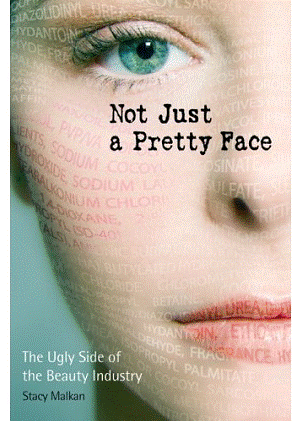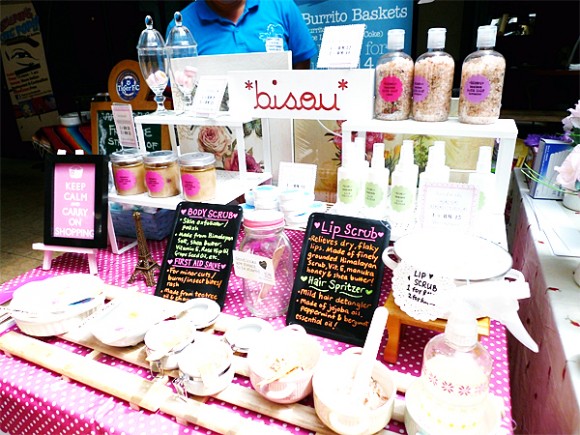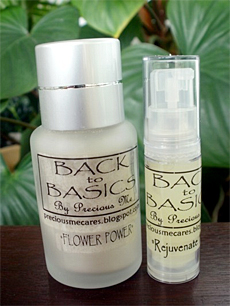
BODY wash, hair shampoo, soap, facial cleanser, toner — most of us use these personal care products on a daily basis regardless of gender. Women are likely to use cosmetics as well in addition to these products, but have you ever stopped and looked at the ingredients contained in the products? The ingredients should be safe, right?
Not necessarily. It turns out that the multi-billion cosmetics industry might not always have consumers’ best interests at heart
Published in 2007, Not Just a Pretty Face: The Ugly Side of the Beauty Industry exposed the pervasive use of toxic chemicals in personal care products. Written by former journalist Stacy Malkan, the book also exposed hypocritical cosmetics companies that brand themselves as pink ribbon leaders, yet continue to use hormone-disrupting chemicals or potential carcinogens in their products. The author is now one of the leading advocates for the Campaign for Safe Cosmetics in the US.
Another short film, The Story of Cosmetics, was released in 2010 to raise public awareness and rally support for the campaign. Although both the book and film were based on an American context, I think they are equally relevant to Malaysian consumers. Similar harmful products are being imported and sold in local stores, yet most of us remain ignorant of this.
So what are the ingredients that we should stay away from when shopping for personal care products? Are all products labelled “organic” or “natural” safe? And what are some of the local alternatives available to Malaysians?
Ingredients to avoid
“Cosmetics should be safe enough to eat,” Horst Rechelbacher, founder of one of the largest eco-friendly beauty salons Aveda, once told The New York Times in 1997. He was right, if you can’t eat it, why would you want to apply the ingredients on your body as the skin would absorb the ingredients and they would end up in your body anyway?
To help consumers search for safe cosmetics and personal care products, one of the key partners in the Campaign for Safe Cosmetics – the Environmental Working Group (EWG) — has set up a cosmetics database called Skin Deep in 2004. Below is a list of ingredients to avoid in various personal care products compiled using resources from the database:
- Soap
- Bar soap — Triclocarban
- Liquid soap — Triclosan
- Toothpaste — Triclosan
Reason: Triclocarban and triclosan are chemicals used to kill off microorganisms such as bacteria and are toxic to aquatic environments.
- Day-time moisturiser — Retinyl palmitate and retinol (Vitamin A)
- Lip balm — Retinyl palmitate and retinol
- Sunscreen — Retinyl palmitate and retinol, oxybenzone
Reason: Vitamin A is a nutrient but it may cause birth defects if pregnant women are exposed to excessive amounts of it. Oxybenzone is a common sunscreen agent that has been linked to hormone disruption.
- Hair products – Fragrance, PEGs, ceteareths, polyethylene, parabens and DMDM hydantoin
Reason: Hundreds of chemicals can be included in the term “fragrance” while PEGs, ceteareths and polyethylene compounds are synthetic chemicals frequently contaminated with potential carcinogen 1,4-dioxane. Parabens are commonly used as preservatives. Usually listed as methylparaben, ethylparaben, propylparaben etc, these chemicals may disrupt the endocrine system. DMDM hydantoin is another preservative. It releases the carcinogen formaldehyde when it decomposes.
- Nail products – Formaldehyde, toluene and phthalates
Reason: Formaldehyde is a carcinogen while toluene is a potent neurotoxin. Phthalates are a group of industrial chemicals that may disrupt our hormone and reproductive systems.
Having trouble memorising all the chemical terms? So did I when I first researched this subject. But it also made me wonder what all these chemicals were doing in personal care products, some of which we use on a daily basis.
It was not pleasant to discover methylparaben and ethylparaben as listed ingredients in my facial cleanser and body wash, so I went on a quest to look for paraben-free and safer products.
Local handmade personal care products
I stumbled upon two female entrepreneurs who make their own skincare products at a flea market at Jaya One, Petaling Jaya last month.
Shelby Kho, 30, is a doctor who makes bath scrubs, bath salts and other body products as her passion. She learned to make them during college and used to make these body products as gifts for her friends. It did not occur to her to sell the products at flea markets to a larger audience until December 2010.
She does not use any artificial fragrance, preservatives or colourings in her products. Natural ingredients such as manuka honey are used as preservatives and essential oils as fragrance.

Kho calls her line of products Bisou Bonbon (which means “candy” in French). Best of all, her products are reasonably priced, ranging from RM9 for a lip balm to RM28 for a jar of body scrub.

Meanwhile, Sal, also 30, is a homemaker from Petaling Jaya. She started making her own facial products when she began to develop sensitive skin at the age of 25 and the condition did not improve after she tried different commercial brands.
After experimenting with various recipes, Sal developed her own skincare line called Back to Basics, which includes cleanser, toner-cum-moisturiser, treatment powder and face serum. Similar to Kho’s body products, Sal does not use chemicals in her products.
“Sometimes I’ll modify my products to suit the customers’ needs as some of them have more sensitive skin,” she said when met at the flea market in June.
Apart from these handmade products, Malaysians may also find safer and biodegradable commercial products at The Body Shop and TNS Skin Lab but their products may of course be pricier. ![]()
Gan Pei Ling is still searching for safe and eco-friendly personal care products, especially local handmade ones. Drop her a line at editor@thenutgraph.com if you know of any.


pc8800 says
Thanks for the article, it’s certainly opened my eyes.
HANI says
I would just like to point out that when you’re buying something anti-bacterial, like an anti-bacterial handsoap, you actually WANT something that kills “microorganisms like bacteria” because the definition of anti-bacterial is that it kills bacteria. The alternative to triclosan is alcohol (an alcohol not safe to eat, not like your average booze), which damages the skin.
As a pregnant woman, I’d also like to know exactly how much Vitamin A is an “excessive amount?” Because I really cannot imagine that there would be more vitamin A in my moisturiser than in my multivitamin that I actually ingest. But having the exact amount (or even an approximate! amount for ballparking purposes) would be more helpful than vague threats to my safety.
By the way, the last time I actually had retinol in a moisturiser I bought was when I bought the moisturiser for my post-menopausal mother, who wanted it to help combat the wrinkles around her eyes. Should retinol be banned altogether from all products because PREGNANT women might find it dangerous?
I agree that there are ingredients in cosmetics out there that are definitely bad for the environment, and there are ingredients that are unsafe to different groups of people, just like sugar is unsafe for diabetics and salt for hypertensive people. Long before I became pregnant, I’ve been frustrated by the lack of disclosure required on packages of cosmetics. I HATE the ingredient “fragrance” because it could have ANYTHING in it, and they never put the percentage amount of ingredients, so they might claim they have titanium dioxide in their product, but if it’s less than 1% of the total product, it’s not useful!
However, I find this article just a tad too scare-mongering. I’m disappointed in The Nut Graph as I never expected to find such sensationalising on a website that was established to uphold journalistic integrity.
Pei Ling says
Hi Hani,
Thanks for your feedback. My purpose of writing the column was not to scare but alert readers who are unaware of potential harmful chemicals contained in personal care products, and highlight safer alternatives available.
Re your 1st point, strong antibacterial substances like triclosan and alcohol are more for medical use. For common personal care or household cleaning purposes, ingredients like baking soda, vinegar and tea tree oil etc should be sufficient.
Re 2nd point, I’m not sure how much Vitamin A your multivitamin contains but the recommended intake for a pregnant woman is 770 mcg or 2,567 IU of retinol (http://www.umm.edu/altmed/articles/vitamin-a-000331.htm). The Environmental Working Group, made up of scientists and experts more learned than I, recommends pregnant woman to stay away from retinyl palmitate and retinol in cosmetics. But if you have doubts, please do check with your physician.
Personally I think aging is a natural process but I respect individuals’ choice in wanting to use retinol creams to help remove wrinkles so I would not advocate for a total ban. But consumers should also be aware that it is a product that needs to be used with care to avoid potential side effects (http://www.ehow.com/how_5888839_use-retinol-creams.html).
Thanks again for your honest comments and all the best with your pregnancy! Cheers.